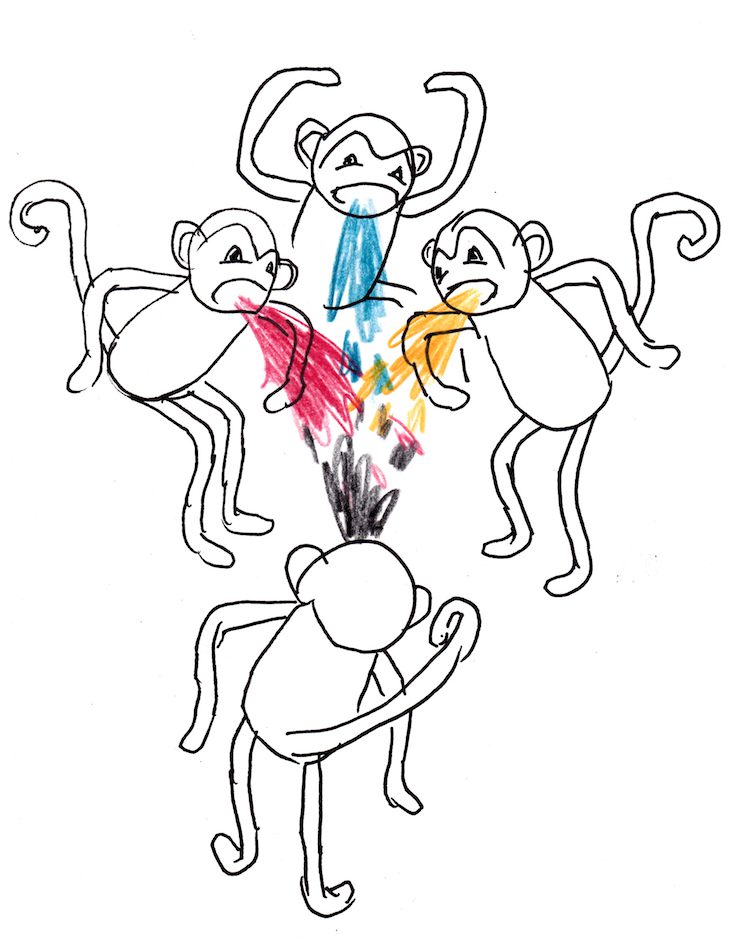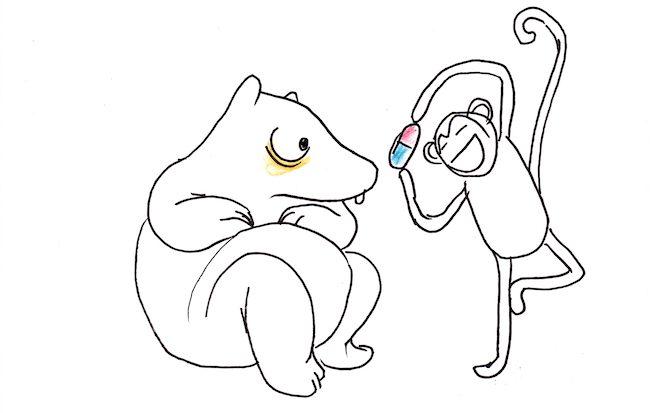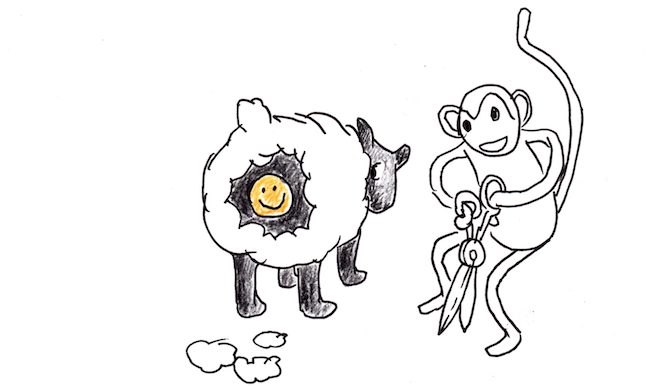
Not long ago, I had a conversation with a woman fifteen or twenty years older than myself, who told me that she thinks of Prozac as “the penicillin of my generation.” She was interviewing me about my book about growing up on antidepressants, and she didn’t try to hide the fact that she found my semi-critical stance toward medication bewildering. “Wait,” she said near the end of our conversation. “I need ask again to make sure I’m clear on your answer. You mean you really don’t think that depression is a disease like diabetes?” I told her I don’t, and though I can’t be certain, I think her trailing silence conveyed a touch of the disgust we reserve for wrong ideas.
Depression has had a tough thirty years of it. Viewed just a generation or two ago as rare, clinical depression is now seen as ubiquitous and pernicious. The World Health Organization identifies depression as the leading cause of disability worldwide, and economists say it costs tens of billions a year in lost productivity. Once seen as a psychological phenomenon that usually passed on its own, even mild depression is characterized today as a biological disease; my interviewer hardly broke new ground in casually comparing it to a staph infection.
But it wasn’t always like this.
Viewed from the distance of history, it’s our current understanding of depression that looks odd. Like ours, most societies have understood that in its extreme forms, depression is abnormal and dangerous. But we are unique in our belief that even a touch of melancholy is a sickness. We’re even unlikely to admit to shades of degree: depression to us is a binary proposition, something you either have or don’t, something that means illness and never anything else or more.
By contrast, societies of the Western past were apt to recognize depression as a kind of fellow traveler—unpleasant but familiar, at times even possessing its own stubborn points of value. Much more than we do, they permitted it to be complex.
***
 At first, the ancient Greek take on depression sounds suspiciously like our own ideas about serotonin. Physicians of the day believed that illnesses were caused by an imbalance in the levels of four substances, called humors, inside the body. Each substance was associated with a different property: blood, from the heart, was warm and wet; phlegm, from the brain, was cold and wet; yellow bile, from the liver, was warm and dry; and black bile, from the spleen and bowel, cold and dry. The ancient Greek term for black bile is melaina chole. An excessivex influx of it into the brain caused melancholia, which Hippocrates defined simply as “fear and dejection that is prolonged.”
At first, the ancient Greek take on depression sounds suspiciously like our own ideas about serotonin. Physicians of the day believed that illnesses were caused by an imbalance in the levels of four substances, called humors, inside the body. Each substance was associated with a different property: blood, from the heart, was warm and wet; phlegm, from the brain, was cold and wet; yellow bile, from the liver, was warm and dry; and black bile, from the spleen and bowel, cold and dry. The ancient Greek term for black bile is melaina chole. An excessivex influx of it into the brain caused melancholia, which Hippocrates defined simply as “fear and dejection that is prolonged.”
But to the Greeks, humors weren’t simply held responsible for illness; they defined ordinary temperament as well. An extreme surplus of black bile could engender melancholia, causing, in Hippocrates’ words, “aversion to food, despondency, sleeplessness, irritability, restlessness.” But a minor surplus determined a personality type. Melancholics, possessing a slight preponderance of black bile, were peevish and moody. Cholerics, with yellow bile to spare, were passionate and quick to anger. Phlegmatics were stolid and deliberate; those of a sanguine humor were cheerful and happy-go-lucky.
Having a melancholic humor presented obvious challenges, but there were plenty who recognized that a touch of melancholy could be a good thing. Aristotle believed that from the ranks of the melancholics came society’s artists, scholars, and visionaries. If a person’s melancholic bent “is quite complete, they are very depressed,” he wrote in the Problemata, around 350 B.C. “But if they possess a mixed temperament, they are men of genius.” He concluded: “All those who have attained excellence in philosophy, in poetry, in art, and in politics had a melancholic habitus.”
***
Modern conversations about depression often return to the idea that the illness carried a terrible stigma in ages past. It is likely that this sense of depression’s stigmatization comes to us from the Middle Ages, when a religious tradition, familiar then but only a muscle memory to us now, identified depression as a type of sin. Called “acedia” or “wanhope” (literally, “faint hope”), it was considered a subset of the deadly sin of sloth. Its major feature was a loss of faith in one’s own worthiness of salvation and mercy in the eyes of God.
A person’s progress into wanhope could start small, with mere irritability and disobedience. Left unchecked, though, the condition could quickly blossom into suicidal despair. In Chaucer’s Canterbury Tales, the Parson delivers a droning lecture to his fellow pilgrims on the dangers of wanhope. He mentions that the trouble begins when the afflicted person starts believing himself bad at heart, “imagining that he has done so much sin that it will not avail him, though he would repent and forsake sin; through which despair or dread he abandons his heart to every manner of sin.” Sounding like an uninspiring motivational speaker, he advises that working hard and avoiding idleness are the best ways to get and stay clear of the “damnable sin” of wanhope.
If we think of sloth as physical laziness, wanhope was a kind of spiritual laxity, a shrinking away from Earthly duty and routine. It was something that happened to you, but also something that you allowed to happen, a mental or spiritual itch that you gave into. Being in a state of wanhope was not only for the future of your own soul, which would go to perdition unless you continued to make good confessions, but also for the community, which lacked the resources to support noncontributing members. If you’re looking for an ancestor of the idea that depression has something to do with being weak-willed, you may as well look for it here.
***
Like our modern concept of depression, wanhope had literally nothing to recommend it. But in the Renaissance, thinkers reached back past the Middle Ages and into Classical antiquity, where they rediscovered Aristotle’s point of view on melancholy. In Renaissance Italy, philosopher and depressive Marsilio Ficino theorized that melancholy signified a capacity for profound thought and feeling. He believed that there was a trace of melancholy in everyone, and identified it as a deep yearning for higher things, a “nostalgia for the celestial fatherland.”
The English Romantics continued the tradition. To them, melancholy was an aesthetic stance. Receptiveness to it signified sensitivity and insight, an association that will seem familiar to any contemporary fan of goth rock or classic Hollywood movies. What was sad was beautiful; what was beautiful possessed an ineffable rind of sadness. John Keats’ “Ode on Melancholy” speaks to a sublime fusion of the sad, the lovely, and the sacred: “Ay, in the very temple of Delight/ Veil’d Melancholy has her sovran shrine.” Coleridge, sounding nearly clinical, rhapsodized “A grief without a pang, void, dark, and drear,/ A stifled, drowsy, unimpassioned grief,/ Which finds no natural outlet, no relief,/ In word, or sigh, or tear.” Then as now, melancholy could signal protest. For Wordsworth, melancholy meant a way to proclaim outsider status, to rebel by withdrawing against the Industrial Age, with its exhausting, empty cycles of “getting and spending.”
***
The next great theory of depression belonged to Freud. To him, depression (he used the Greek term, melancholia) wasn’t an aesthetic mode but a state of feeling, an emotional reaction caused by loss. The loss could be of anything: a relationship, a possession, even a long-held hope or cherished belief. Often the loss wasn’t conscious, but the feeling was. Melancholia felt like grief, with the addition of bitter feelings of anger, guilt, and reproach heaped upon the self.
Freud didn’t think that melancholic reactions were healthy, per se, but he did believe that they were widespread. Vulnerability to depression was one of the hazards of loving and connecting, and particularly of over-identifying with the things one loves. Anybody could fall into melancholia from time to time, but particularly at risk were those who find their self-worth in attachments and achievements rather than inside, and of eager-to-please individuals who keep their aggressive feelings pent up inside. In an increasingly individualistic society, Freud gave us a vision of grief whose roots were interesting and personal, springing from the bonds and experiences that make us who we are.
***
Freud’s ideas, variously refined and adapted for American consumption, basically dominated our thinking about depression until the early 1970s. That’s when science, or at least the will to science, began to enter.
During the 1960s, American psychiatry hit the doldrums. Psychoanalysis had failed to live up to the outsized promises with which it had arrived on our shores decades earlier. Many psychiatrists had grown envious of other medical specialties, which had benefited from new technology after the end of World War II while their own discipline plodded on in its tweedy way. The dissenters were inspired by advances in the pharmaceutical treatment of mental illness. Thorazine, the first anti-psychotic drug, became available in America in the 1950s. Shortly after, an experimental drug for tuberculosis turned out to have antidepressant properties—legend has it that the antidepressant era began when worn-out T.B. patients began spontaneously dancing in the wards.
In the 1970s, psychiatry in America was taken over by a group who wished to think of their discipline not as a trumped-up humanity but a proper medical specialty, and to consider mental disorders as real, biologically based diseases. They re-wrote the Diagnostic and Statistical Manual of Mental Disorders or DSM, whose third edition, published in 1980, reflects a sea change away from its psychoanalytic roots.
A few years later, researchers discovered new antidepressants that appeared to work by boosting levels of serotonin in the brain. The vanguard of the psychiatric and neuroscientific communities always understood that there was not enough evidence to support the inference that an insufficiency of serotonin causes depression. But that was the account of the Prozac miracle that doctors and drug companies disseminated to the public, in countless advertisements, popular science articles, doctor-patient conversations, and PSAs.
The idea that depression is a chemical imbalance idea was a leap, but it succeeded because it made sense to antidepressant consumers and served the needs of psychiatrists in their search for medical legitimacy—real diseases with real treatments—and the needs of drug companies to establish a rationale for the use of their products. Through it, our modern definition of depression was born. This new depression was a disease, pure and simple. It was caused by nothing, signified nothing, and was best and most appropriately treated with drugs. As tranquilizers had in the 1960s and ’70s, antidepressants quickly went mainstream. Affordable and convenient, medications were able to reach many people who couldn’t afford or would not have considered talk therapy.
Yet despite the promise of definitive, modern understanding conveyed by the chemical imbalance account, the biological reality of depression still floats away from our grasp. Twenty-five years later, scientists still haven’t achieved a satisfying explanation of just how or why antidepressants work. No benchmark for a normal level of brain serotonin has been established, nor have depressed people been shown to have less serotonin in their brains than the non-depressed. Antidepressants are effective for many, especially in cases of moderate to severe depression, and we understand the brain better every year, though an unfathomable amount still remains to be learned. But on close inspection, “depression is a chemical imbalance” turns out to be is every bit as much a model, a metaphor, a story, as “depression is an excess of black bile.”
***
That’s why depression is not a disease like diabetes. Diabetes isn’t a metaphor. It was discovered, not invented. Its cause and nature are known. Depression exists—all those disparate societies acknowledged and named it. But it is among the most conceptually malleable of illnesses. Its borders are fuzzy: at the extreme, depression is eminently disease-like, a true madness, but its mildest forms are fleeting and banal, comprising thoughts and feelings that we’ve all had a taste of. Most of all, perhaps because it affects consciousness, depression cries out for interpretation. Throughout history, each culture has given depression a meaning, or meanings. Each has told a story about it, and the story reflects much about that culture’s values, fears, and aspirations. Chemical imbalance is our chosen story, and it speaks volumes about the way we would like to approach the world.
Our society doesn’t have a unique claim on the truth of depression, and I don’t suspect we ever will—because even though research should and will continue, yielding new treatments and improved understanding, the meaning of depression isn’t something we’ll discover under a microscope. However uncomfortable we are with the fact, it is something we have to make up.
So we can keep on saying that there’s nothing especially mysterious about depression, that it’s a glitch in the brain to be squelched as we would a bacterial infection. We can argue that defining depression as a physical disease is better because it’s cleaner and simpler, because it removes blame and erases stigma. That would be a story, though, and we could just as easily tell another. With equal veracity, we could say that depression is fundamentally human. We could argue that a touch of it, however unpleasant, is a fitting response to some of life’s enduring questions and society’s intractable problems. We could look back and say that there’s something in each of those strange old accounts of it that makes sense. We could believe that our tendency toward it is tangled irrevocably with the things that make us creative, spiritual, capable of love and vulnerable to loss—and that as such it deserves, if not open-armed welcome, then at least the respect that is due to an old and worthy foe. We could even say that a world without depression would be, alternately, a place we wouldn’t recognize, or a nice place to visit, but not one we’d want to live in for very long.
***
Rumpus original art by Jason Novak.







